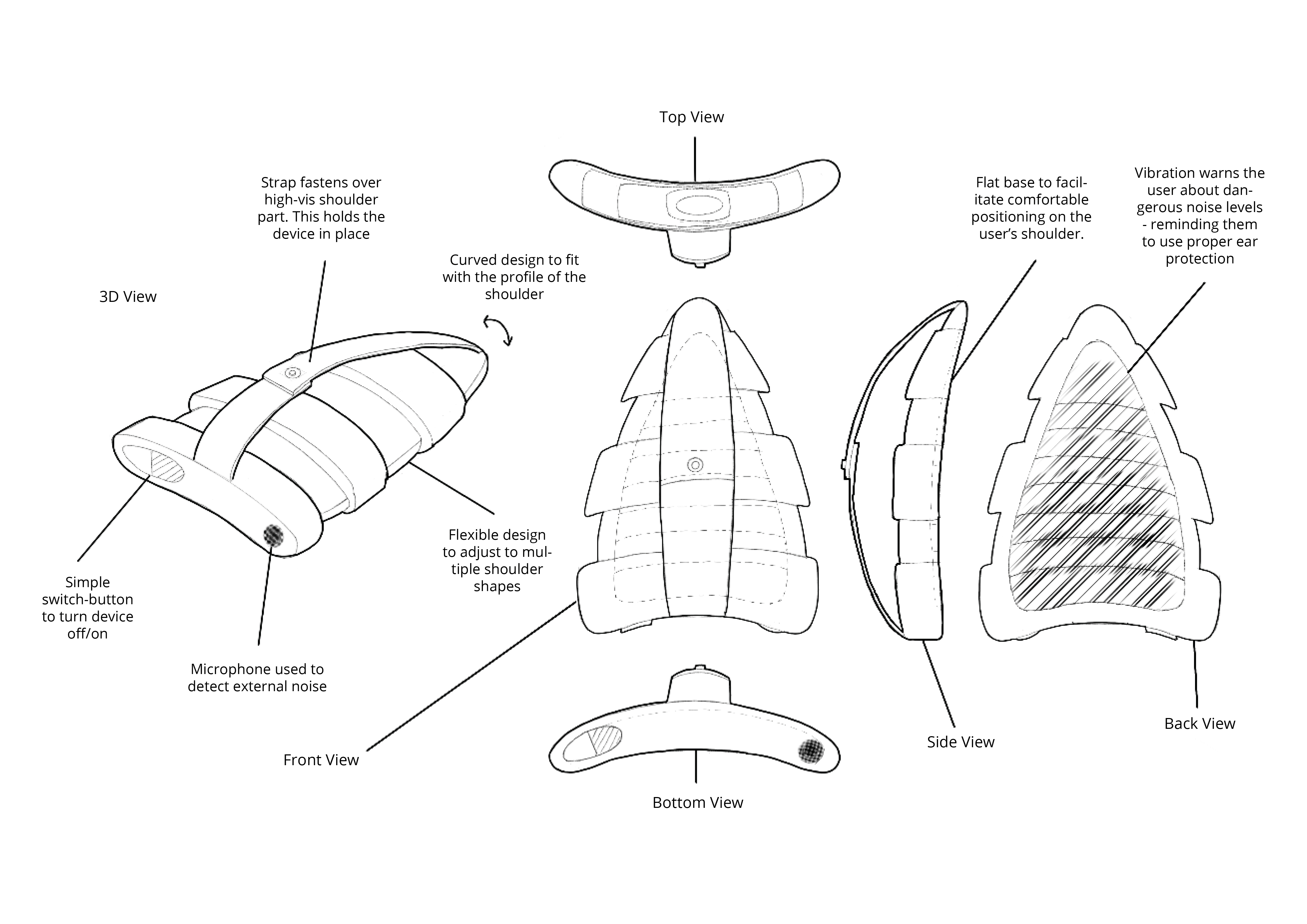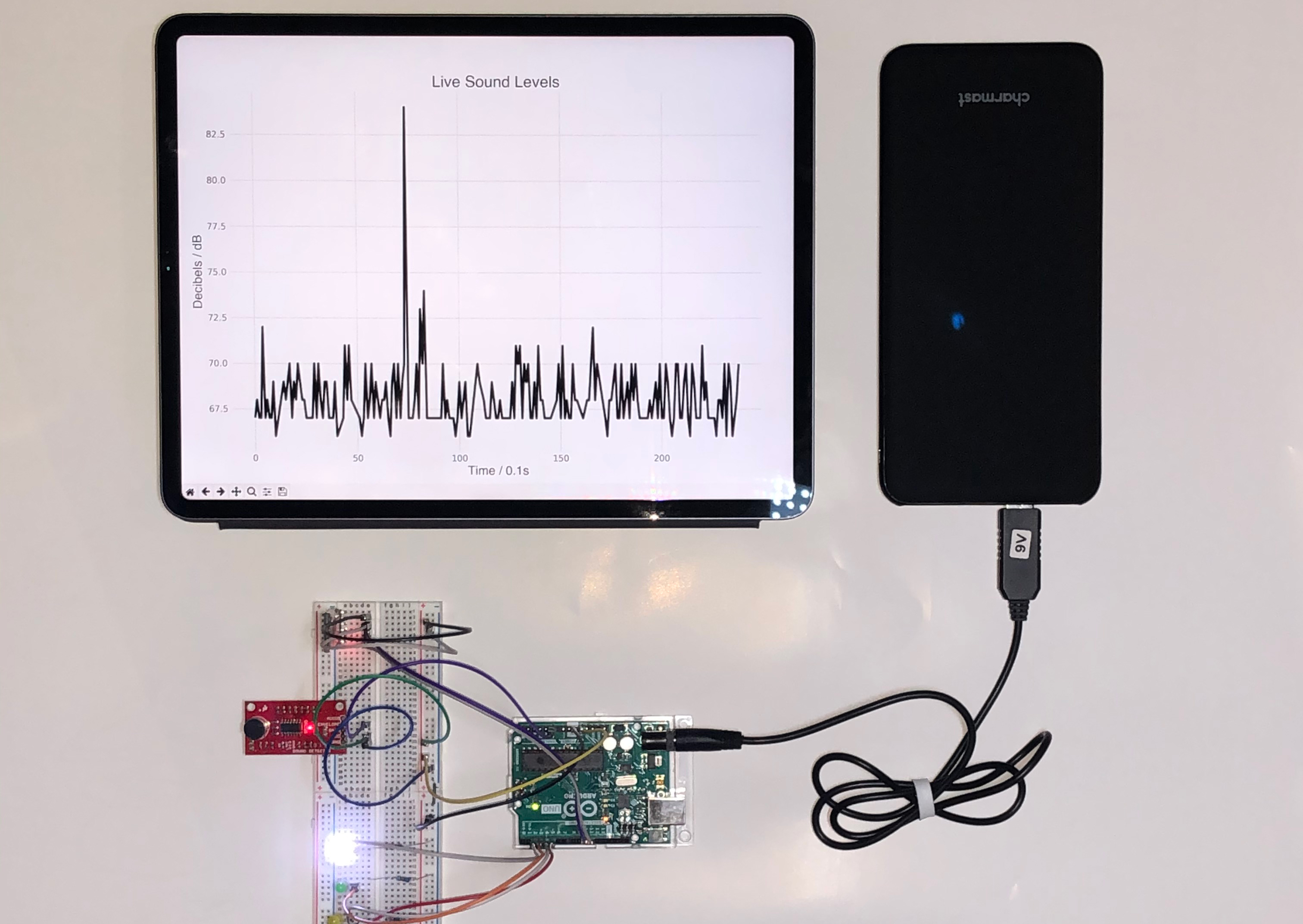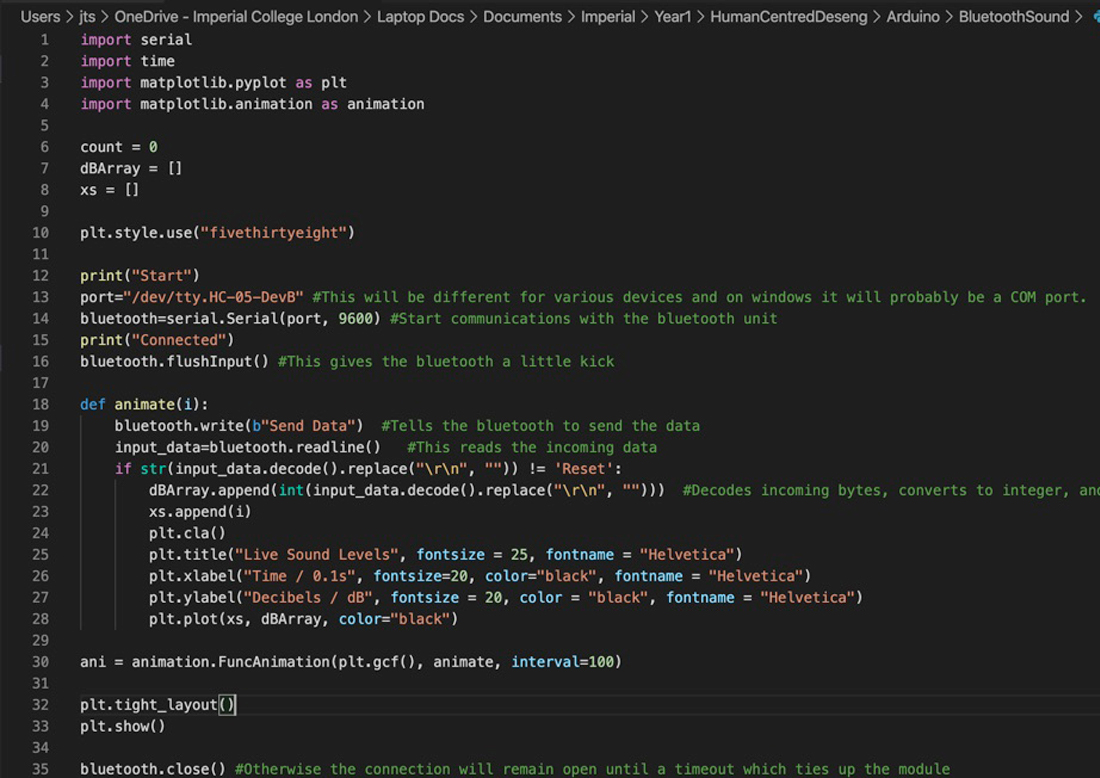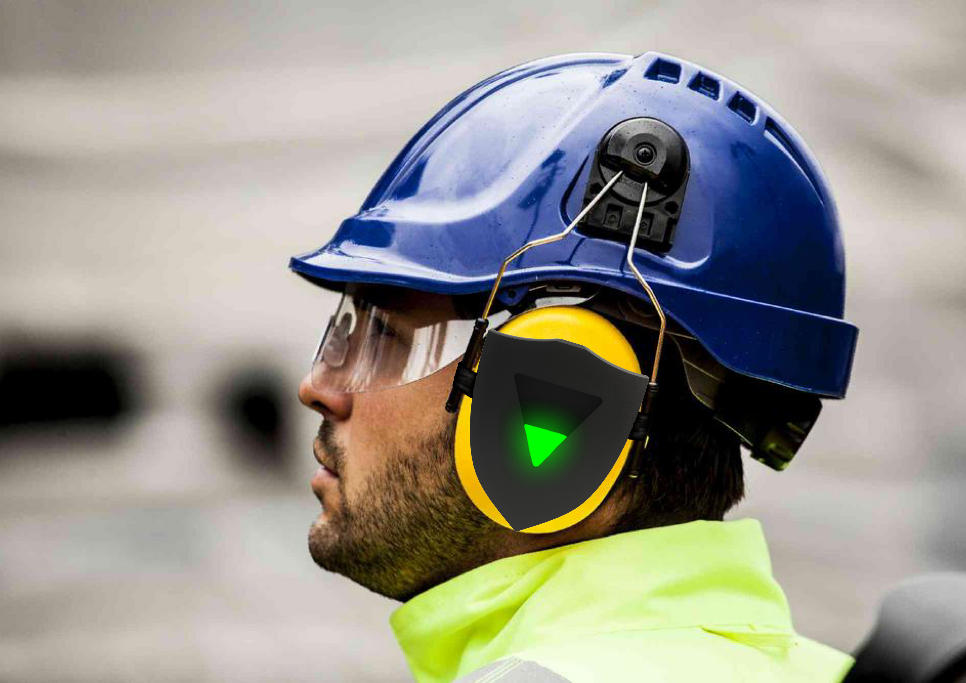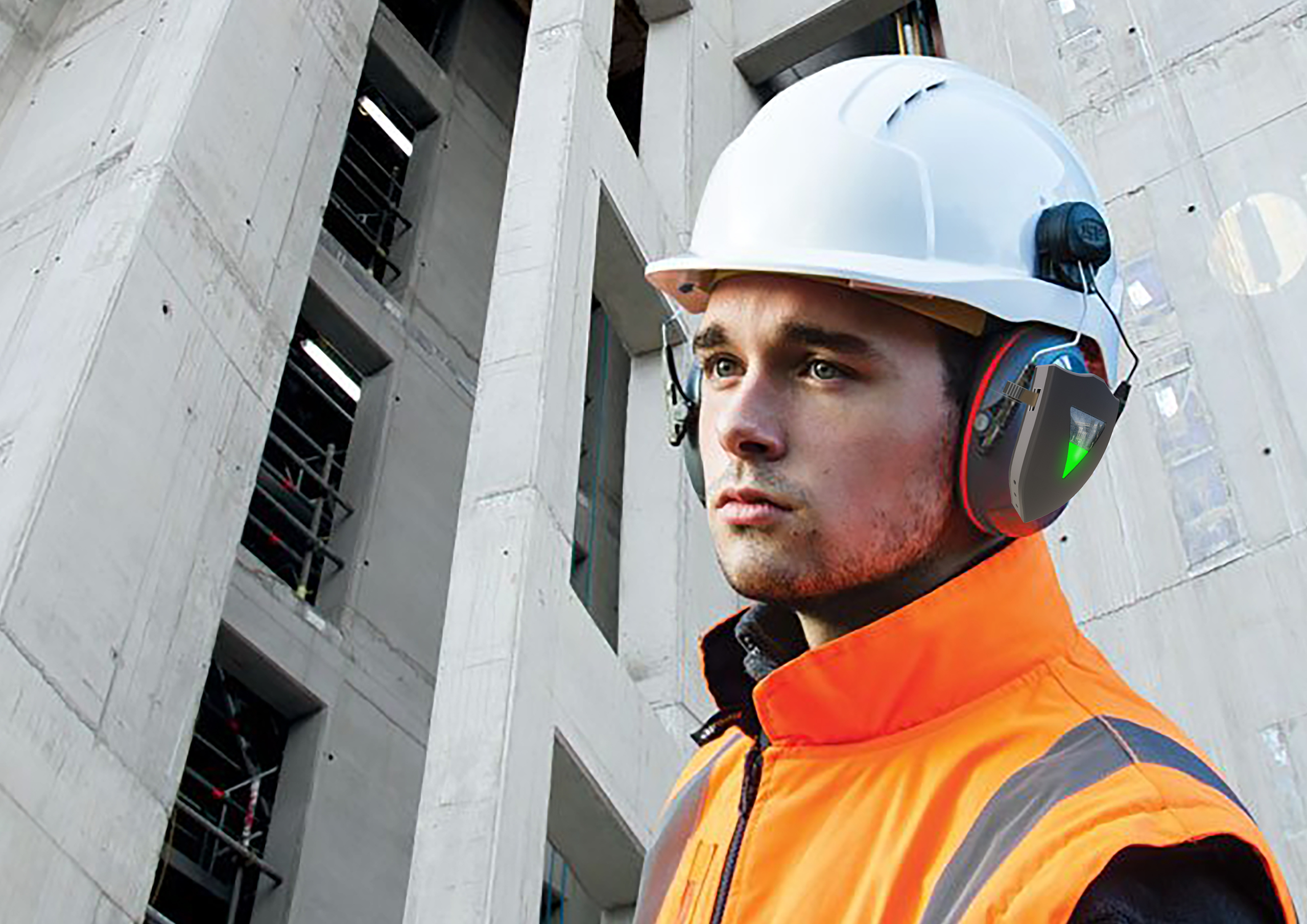Protec
Info
This was undertaken as a group university project in 2020 for our 'Human Centred Design Engineering' module. We were given an open brief to design something for physical well-being, with the final outcome manifested through 'works-like' and 'looks-like' prototypes.
Problem
1 in 5 young adults (18-25) suffer from some variation of permanent tinnitus, a ringing in the ear caused by exposure to loud noise. This can cause harmful consequential effects, including depression, and construction workers are particularly at risk; with studies showing that over 50% of workers have experienced significant abnormal noise-induced hearing loss.
Solution
Protec addresses the problem, not by reinventing ear protection itself, but by offering reliable noise data to facilitate the interaction between the user and their protective equipment, and by providing coherent feedback to the site manager.
